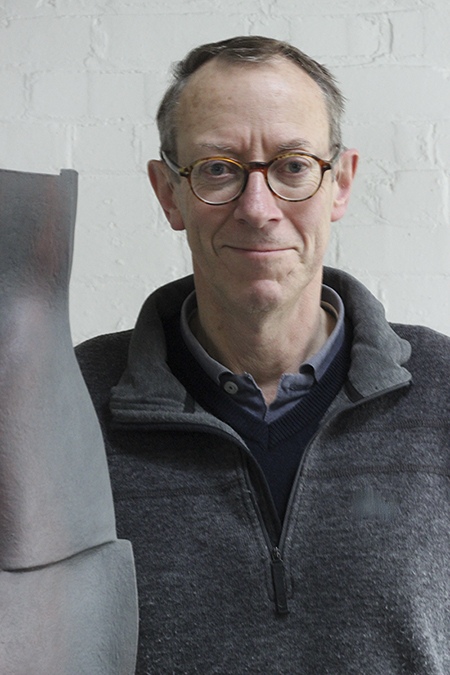
Sculpting the Void: Ken Eastman's Journey Through Form and Emptiness
Ken Eastman’s nomination for the 2024 Loewe Craft Prize with his piece “Don’t Get Around Much Anymore” marks a significant milestone in his distinguished career in ceramics. This work, a profound exploration of the interplay between emptiness and presence, showcases Eastman’s mastery in manipulating clay to communicate complex spatial and emotional narratives. He describes the artwork as a contemplation of “emptiness as a presence,” achieved through a meticulous balance of composition. This creation process involved incremental decisions and meticulous attention to how each element interacts, slowly bringing the conceptual vision into focus.
Since his initial encounter with clay at Edinburgh College of Art in 1980, Eastman’s passion has only deepened, evolving into a profound, philosophical engagement with this elemental medium. His choice to work with white stoneware and a restrained palette of colored slips and oxides enhances both the structural and aesthetic qualities of his sculptures. Eastman’s preference for slab-building with basic tools underpins a philosophy where constraints facilitate rather than limit creative expression, allowing him to seamlessly integrate elements of architecture and painting into his ceramic art.
Eastman approaches each new piece with a blend of anticipation and spontaneity, seeing the act of making as an essential expression of his identity and philosophical inquiry. His creative process, deeply rooted in a cycle of continuous exploration and discovery, serves as a medium for probing broader existential themes, making each work a narrative that resonates with the intrinsic rhythms of life and art. Let’s follow the conversation below with Eastman to learn about his creative philosophy and process in depth.
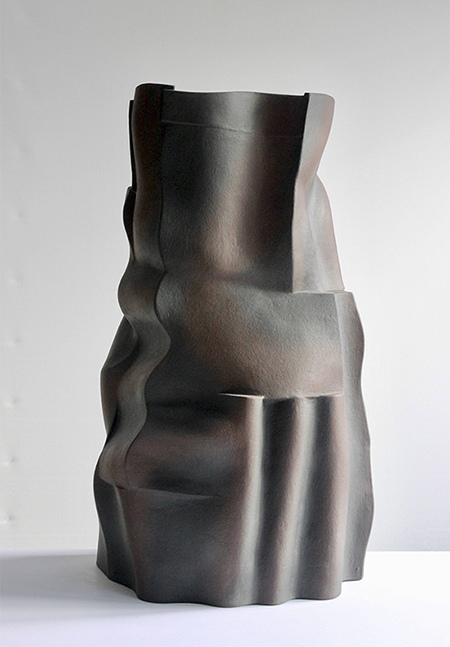
Introduction to the Artwork: Could you describe the inspiration and creative process behind “Don’t Get Around Much Anymore,” which was shortlisted for the Loewe Foundation Craft Prize 2024?
The inspiration for the piece comes primarily from a long practice of working with clay, making to explore and ask questions. The piece defines an emptiness as a presence- it is a study into how composition and balance can affect the meaning of contained space and can combine to create ideas which affect our emotions. The work is the sum of innumerable small decisions, choices and actions- being built up gradually through addition, so that the piece came into focus slowly. In this way I was able to concentrate on how each element met and related to its neighbours and what it contributed to the whole.
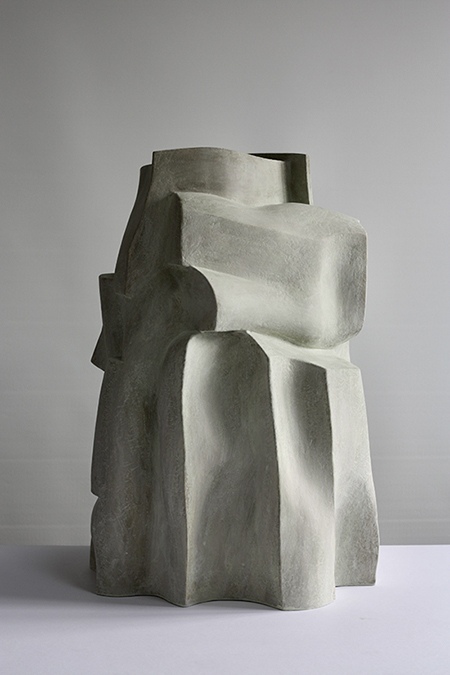
Techniques and Materials: You have demonstrated exceptional skill with white stoneware clay in your recent work. Could you elaborate on your choice of materials, particularly the use of colored slips and oxides, and how they contribute to the aesthetic and structural qualities of your pieces?
Within a few weeks of starting to work with clay in Edinburgh College of Art in 1980, I knew I would work with it for the rest of my life. Clay opened up worlds of possibilities, offered a language beyond words which is universal and timeless. I soon found that the abstract nature of the material meant that I needed to place structures and limitations on my working methods, in order to make progress- restrictions gave me freedom. So, for many years, I have worked with a single white stoneware clay, a technique of slab- building, and a few basic hand tools-rolling pin, knife and some brushes.
I start every piece, with only a loose idea about what I am going to make. I begin by rolling out slabs of stoneware clay with a wooden rolling pin. Actually, most of the rolling is bashing the clay flat and the rolling smooths the material towards the end of the process. Clay doesn’t really suggest much- it’s cold and mute, so decisions continually have to be made. Not what the piece will look like, which will in time become clear, but the details- how wide, how long, how thin or thick the slab- choices which determine shape. Painting layers of coloured slips and oxides onto the surfaces, and firing the work repeatedly, moves my work closer to painting and architecture.
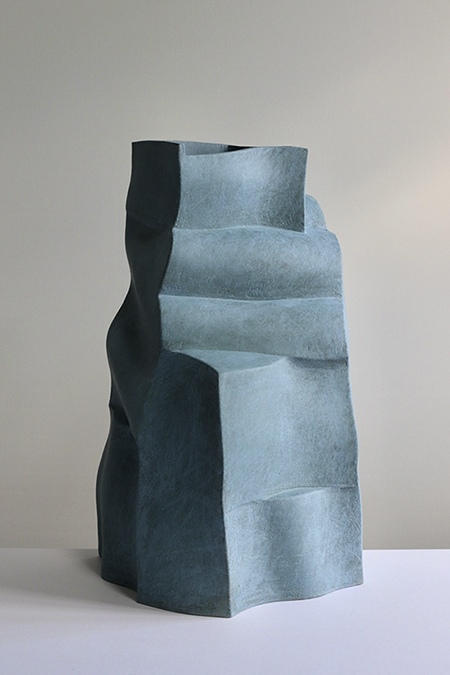
Process and Inspiration: You mentioned that your process begins spontaneously with the manipulation of clay. Could you share more about the emotional and mental state you find most conducive to starting a new piece? What initially sparks this creative flow?
I have always made things and I still have an essential need to make- it’s how I give shape to the world and make sense of things. I find many things inspiring- people, landscape, music, reading, but I don’t need specific inspiration to work-for me, making is a practice, it has to be done again and again- it’s hard and in a way, if you don’t have to do it, it would be easier not to. I work to explore and discover new things- a large part of the reason for making is to see things that I have never seen before, to build something which I cannot fully understand or explain. Emotionally, making involves anxiety, anticipation, trepidation, risk, turmoil, confusion, release, joy, elation. The whole process is exhausting.
The Concept of the Vessel: Your work often centers around the vessel as a form. Can you discuss how the concept of the vessel serves as a canvas for your exploration of abstraction and how it aids in conveying meaning?
My work centres around the idea of the vessel- I use the vessel as a subject- to give meaning and form to an expression. Working through the medium of ceramics, I can be both builder and painter; can handle shape and structure, as well as explore tone and colour. To quote Herbert Read- “Pottery is at once the simplest and the most difficult of all arts. It is the simplest because it is the most elemental; it is the most difficult because it is the most abstract.”.
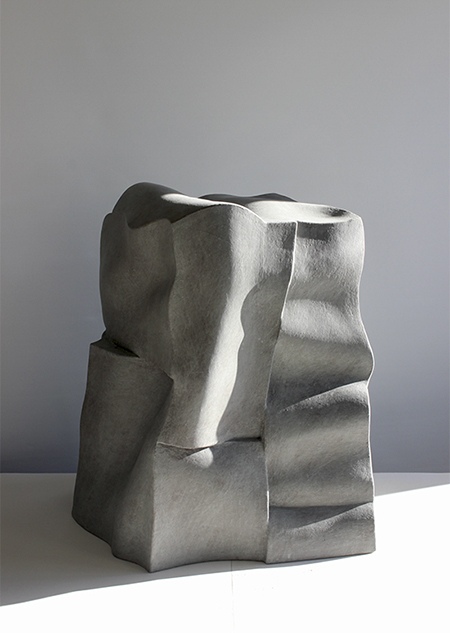
Philosophy of Light and Space: The interplay of light and space seems crucial in your work, particularly in how it defines form and surface. Can you elaborate on how you conceptualize and manipulate these elements during the creation process?
You are right- the undulation of surface combined with colour and light, are fundamental contents of my work. In a sense, light is everything -its what’s about the work and it’s what the work’s about. In the making process, I work with the shifting and changing natural light, as it moves through the studio at different times of the day and the year.
Anthropomorphic Qualities: Pieces like “About Time” and “Distance Coming Closer” exhibit a dynamic, almost human-like energy. Can you discuss the process of infusing such anthropomorphic qualities into inanimate clay? What challenges does this pose?
Building with large soft slabs of clay in an intuitive way, the anthropomorphic qualities of ceramics are frequently apparent. Making is a physical process, I spend hours touching the material, outside, around and inside the work. The body of the clay becomes the body of the vessel through the body of the maker. Lines surfaces and shapes tell stories, they hold meaning. The challenge for me is to be aware, to be sensitive to these meanings and associations, to find a way to include them and accept them, but also to moderate them- it is a balance. A tiny shift in the angle of a plane of clay, can render a fierce work kind, or a strident piece tolerant.
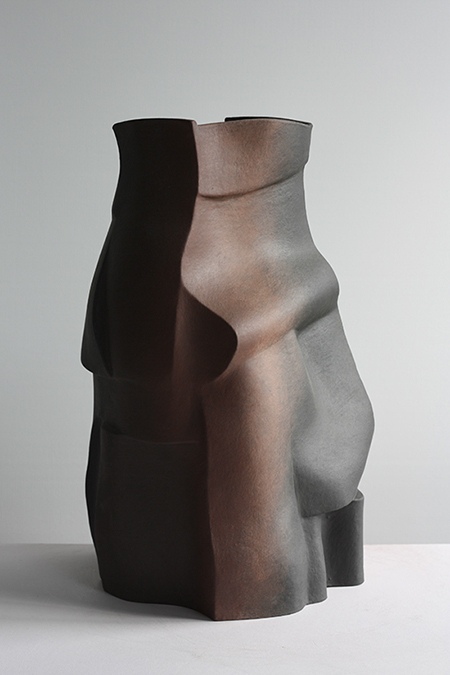
Interior versus Exterior: You have created pieces with concealed internal spaces and intricate exteriors. What does the dichotomy between the interior and exterior reveal about your philosophical or artistic inquiries?
‘That day she put our heads together,
Fate had her imagination about her,
Your head so much concerned with outer,
Mine with inner, weather.’
From Tree at my Window, Robert Frost
When making a vessel out of clay, most of the object is always out of sight- only about 30% of the object can be ever be seen at one time- most of it being underneath, inside or round the back. So in one sense, I am working blind (incidentally, I increasingly spend more time making with my eyes shut). Having made slab-built vessels for many years now, I know this suits me- I am happy to work with the unknown, I like to explore, to ask questions rather than find answers
Evolution of Color and Texture: Over the years, how has your approach to color and texture evolved, particularly with the shift toward more monochrome palettes and subtle variations?
There have been periods when my work is more polychrome and periods when its more monochrome- its has always been this way. When I am making a piece, I don’t know what colour it will be. Once the piece has begun to take shape, I often start to paint on its surface -to define or sometimes change its sense of form. It is a way of discovering and understanding what I am making. What is painted on the surface of clay will alter our reading of the underlying form. It is this dialogue and interaction between form and surface, two and three dimensions which is at the heart of my work.
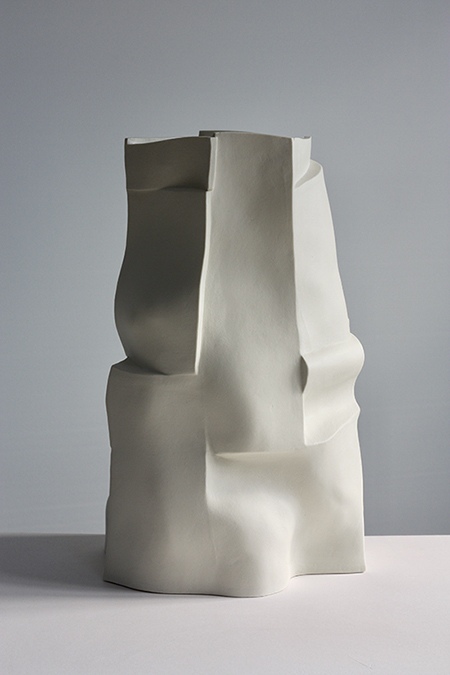
Future Directions: What new themes or techniques are you currently exploring? Are there any upcoming projects or exhibitions that you can tell us about?
As well as the Loewe Craft Prize exhibition, I have quite a few projects on at the moment, with work in a variety of galleries around the world. In particular, I am working for an exhibition at Make Hauser and Wirth Gallary in UK in the autumn of 2024.
Legacy and Advice: What advice would you give to aspiring ceramic artists who admire your work? How do you hope your contributions to the field will be remembered?
Always keep making, it’s a practice. Be honest, trust your eyes, take risks, be self-critical, accept your own work. There are no rules.
In navigating the intricate layers of Ken Eastman’s ceramic artistry, it becomes evident that his creations are more than mere objects; they are profound explorations of space, form, and human emotion. Through his disciplined yet deeply intuitive process, Eastman continues to redefine the boundaries of ceramics, offering viewers and fellow artists alike a rich tapestry of textures, colors, and forms to explore. As we delve deeper into his thoughts and methodologies, we not only gain insight into the complexities of his craft but also come to appreciate the profound philosophical underpinnings that guide his work. Eastman’s legacy, characterized by an unwavering dedication to exploration and expression, invites us to perceive the world of ceramics through a lens of boundless possibilities and nuanced artistic discourse.